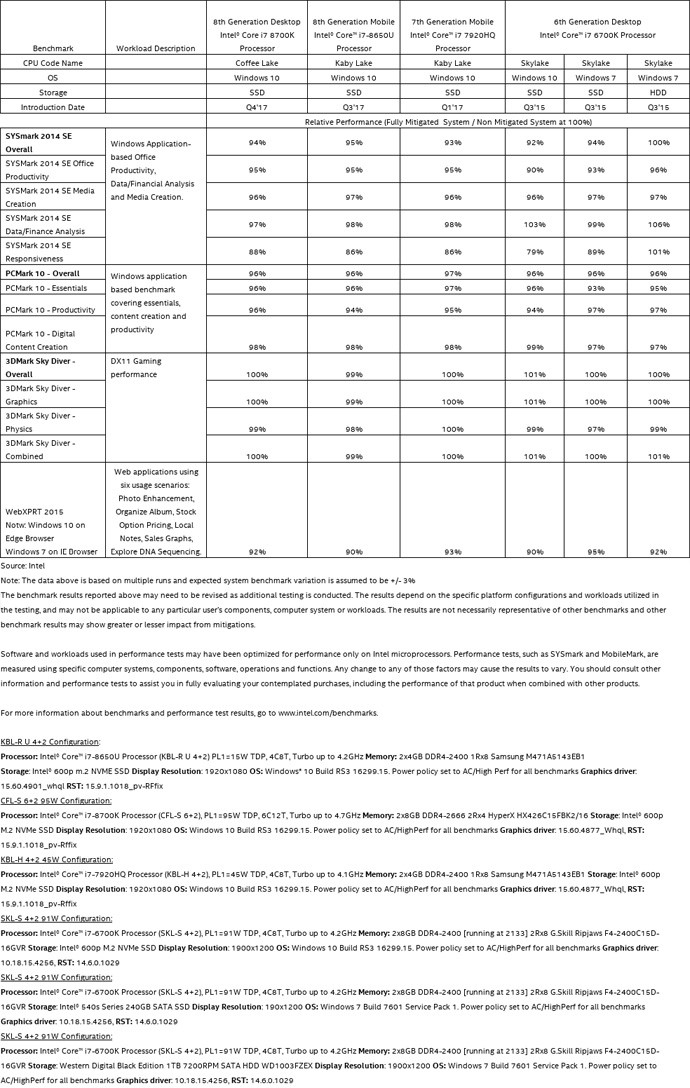Intel previously said that it expected its performance impact should not be significant for average computer users, and it thinks the data it is sharing today supports that expectation on these platforms.
Intel said: "The performance impact of the mitigation on 8th generation platforms (Kaby Lake, Coffee Lake) with SSDs is small. Across a variety of workloads, including office productivity and media creation as represented in the SYSMark2014SE benchmark, the expected impact is less than six percent. In certain cases, some users may see a more noticeable impact. For instance, users who use web applications that involve complex JavaScript operations may see a somewhat higher impact (up to 10 percent based on our initial measurements). Workloads that are graphics-intensive like gaming or compute-intensive like financial analysis see minimal impact. Our measurements of the impact on the 7th Gen Kaby Lake-H performance mobile platform are similar to the 8th generation platforms (approximately seven percent on the SYSMark2014SE benchmark)."
The 6th generation Skylake-S platform shows a "slightly higher impact" approximately eight percent on the SYSMark2014SE benchmark.
Intel also measured performance on the same platform with Windows 7, a common configuration in the installed base, especially in office environments. The observed impact is approximately six percent on the SYSMark2014SE benchmark. Observed impact is even lower on systems with HDDs.
What Intel is not saying is that those figures are a lot higher than it expected to see for the newer chips. However the newer chips should hardly have been affected. On Skylake and beyond, Intel has refined the instructions used to disable branch speculation to be more specific to indirect branches, reducing the overall performance penalty of the Spectre "mitigation".
Older versions of Windows have a larger performance impact because Windows 7 and Windows 8 have more user-kernel transitions because of legacy design decisions, such as all font rendering taking place in the kernel.
Older chips which lack Skylake improvements will be gutted by the patches. We were expecting to see drops of 30 percent and yet Intel has failed to mention these older chips in its announcement. This figure is more important than the post-Skylake chips because there will be a lot more older Intel chips out there. Intel has promised to release figures for chips that are up to five years old which should cover the bulk of these older chips, but five years is no longer a long time in computing terms. There are a lot of PCs out there which are older than five years old.
Here are Intel's figures





